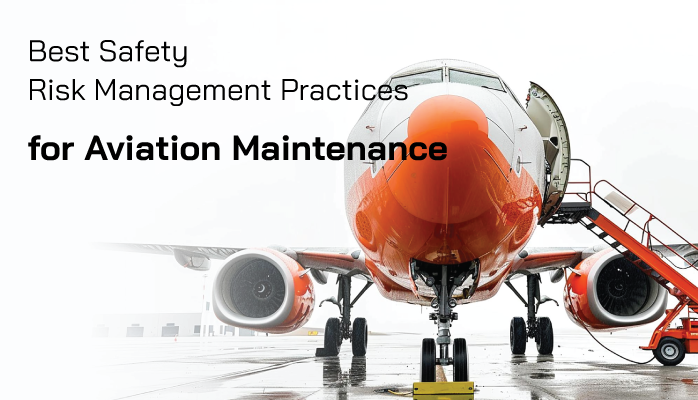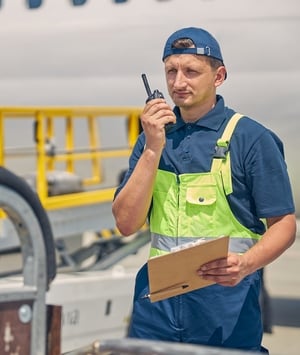Best Safety Risk Management Practices for Aviation Maintenance

In aviation maintenance, as in all other aspects of the aviation sector, safety is paramount. Four safety management practices that can be applied to make any maintenance operation safer are:
- use of tangible aviation safety metrics to measure effectiveness,
- open communication between management and operational employees,
- continuous improvement (CI), and
- policies that distinguish willful acts of misconduct from inadvertent errors.
Most successful maintenance organizations have tangible safety metrics that help define their results in terms of safety. For instance, lost-time injury frequency is a metric used to identify potentially unsafe maintenance practices or procedures.
Back injuries and falls are common injuries at overhaul facilities, but by analyzing lost-time injury frequency data, procedures can be put in place to prevent injuries.
How to Foster Communication in Aviation Safety Management Systems
Many of us have dealt with situations where communications between management and those performing the work have broken down. This leads to an increase in:
- errors,
- unsafe working conditions, and
- potentially hazardous situations.
In large organizations, open communication starts at the ground level through open-door policies, regular feedback, and trust in the decision-making of subordinates. These same policies can be extended to both smaller companies and the upper management in larger organizations.
Related Articles on Aviation Safety Risk Management
- What Are Important Activities in Safety Risk Management (SRM)?
- How to Review Your Aviation Safety Risk Management Procedures
- 5 Signs of Good Aviation Risk Management Training
How Does Plan Do Check Act Encourage Safety

Due to the highly regulated nature of the aviation industry change often comes slowly. However, competition necessitates change, and through a process of continuous improvement it can be negotiated successfully.
A tool for continuous improvement suggested by the ASQ is a four-step quality model—the plan-do-check-act (PDCA) cycle:
- Plan: Identify an opportunity and plan for change.
- Do: Implement the change on a small scale.
- Check: Use data to analyze the results of the change and determine whether it made a difference.
- Act: If the change was successful, implement it on a wider scale and continuously assess your results. If the change did not work, begin the cycle again.
According to the American Society for Quality (ASQ), "Continuous improvement is an ongoing effort to improve products, services or processes. These efforts can seek 'incremental' improvement over time or 'breakthrough' improvement all at once."
Defining Acceptable Level of Safety in Aviation Maintenance
According to James Reason in the paper A Roadmap to Just Culture: Enhancing the Safety Environment, "A safety culture depends critically upon first negotiating where the line should be drawn between unacceptable behavior and blameless unsafe acts."
In aviation maintenance errors happen all the time.
- Mechanics break things in the process of trying to fix them and often that happens because of an honest mistake;
- There are instances of willful misconduct, but those are small compared to the number of honest mistakes that are made in the course of regular maintenance.
By establishing policies that differentiate willful acts of misconduct from inadvertent errors, employees will be more likely to report mistakes or hazardous situations thereby creating a safer work environment. You must define the behaviors that meet your definition of Acceptable Level of Safety (ALoS).
Final Thought: Four Key Aviation SMS Practices
Safety is a top priority in the aviation sector. From my time in the aviation field and the classroom, the application of the 4 key practices can result in positive safety outcomes in the aviation maintenance sector:
- Tangible data metrics;
- Good communication;
- Continuous improvement; and
- Defining ALoS in safety policy.
Last updated in April 2025.





